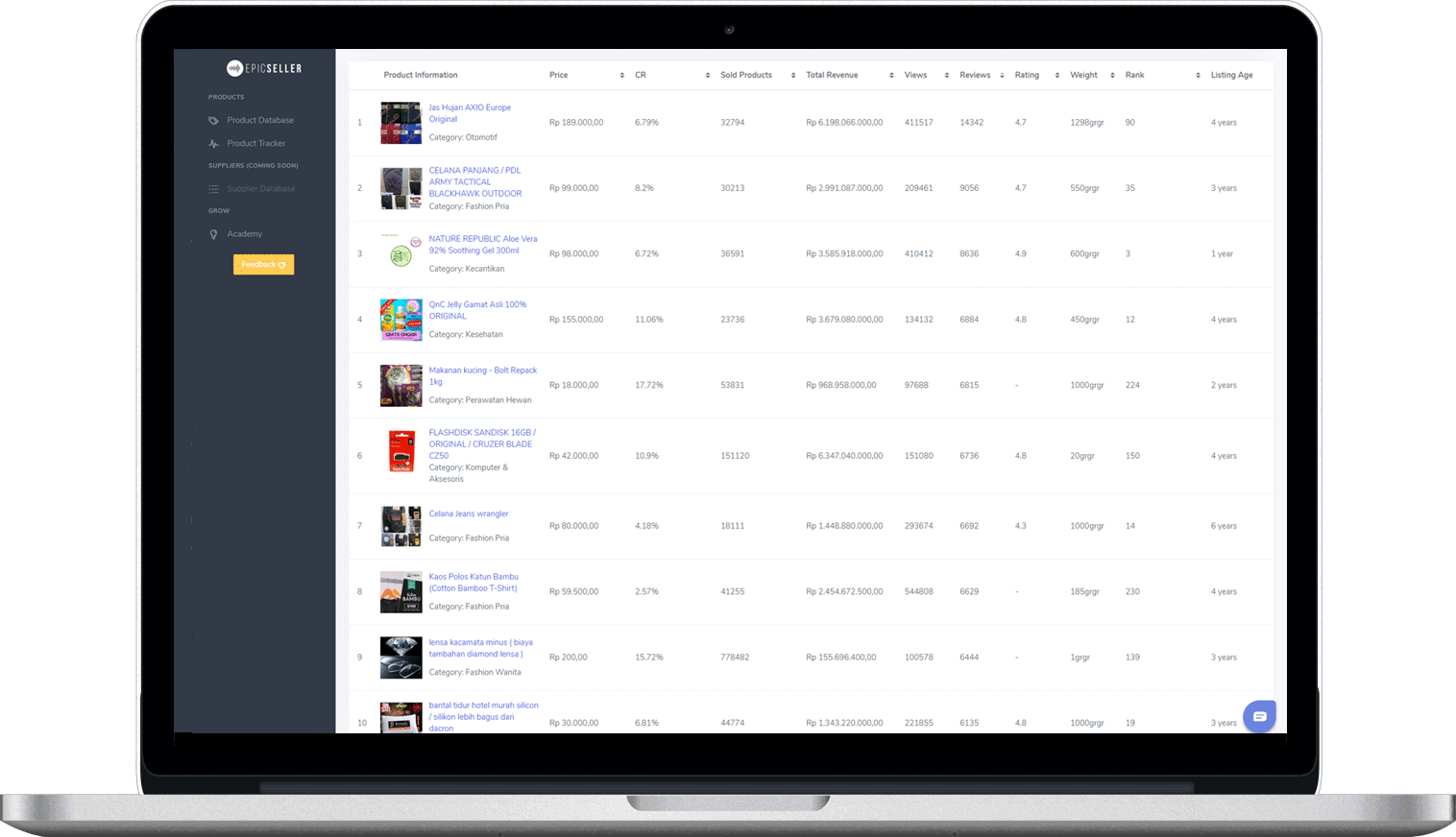Launching a SaaS in Indonesia | Market-Entry Barriers

For the past 6 months we’ve worked on a marketplace intelligent SaaS called Epicseller.id which helps Indonesian online merchants to identify promising products, adjust their own strategy and make more money on Indonesian marketplaces. With the founder team completely being German and just one of us living in Bali, we made our first important learnings and I want to share them here.
1. Forget your SaaS-Subscription metrics
Say goodbye to Stripe and Paypal. When it comes to payments, fraud is a big problem in Indonesia or at least it was and therefore only <1% (it's hard to find reliable sources) of all Indonesians have a credit card at hand. While online payments can be issued online, most of them then have to be confirmed at an ATM, SevenEleven, Alfamart, IndoMarket or similar services around the corner. This creates a huge payment gap and the subscription metrics you were hoping for probably won’t work at all. Subscriptions and auto-charge feature don't work with these payment methods.
Only 36% of all Indonesian have a Bank account; Only 1% of them use their credit card.
We don’t know yet what this will mean for our churn-rate and customer lifetime value. But it definitely means that we have to build the product in a way that it becomes indispensable for our target group. I mean that’s the goal anyway, right? I fear it will heavily increases our risk and it will most likely influence the way we make feature decisions. On top it means that we'll most likely have to double down on payment related communication as well as reactivation and retargeting measurements.
2. Payment Gateways are a pain
We tried them all: DOKU (used by Facebook, probably the oldest one), XTransfers, Xfers, Midtrans, Xendit - and so on. One is more bureaucratic than the other and you need to make sure to be incorporated and all set up with a tax ID in Indonesia. And that can take months. Once you're set up, all these payment gateways require a bunch of documents. But that wasn’t all of the bad news. From a technical perspective these gateways are a mess. Different, confusing, splitted and incomplete API documentations made me spent more time in their WhatsApp support (something that works quite well) than actually implementing the gateway. The APIs itself are hard to maintain and you might end up implementing endpoints from different major API versions, whereby the API design is often quite bad as well. SDKs, at least for PHP, are either non-existent or incomplete and documented in Indonesian instead of English and for sure not PSR compliant. Eventually we endet up working with Xendit. Another "good impression" made Midtrans. Whatever you implement, pick a solution that covers all the different ways Indonesian like to pay. The payment market in Indonesia is very fragmented and you might loose a big part of your target group by not covering them. As of now, we don't have enough knowledge of our target group. If you just want to go for a Paypal like solution, take a look at Ovo.
3. Build it mobile first, whatever it is

That you should in general develop products mobile first is something we all know these days. But we’re about to build a data exploration software, something with a lot of filters, big tables, graphs and tons of metrics. We thought™ that people would actually want to use their desktop computer when it comes to using such a solution. But nope, not at all.
Many Indonesian merchants don't even have access to a desktop computer
They come via mobile and they’ll stay on mobile, and a friendly hint that “For the best experience, use your desktop” won't help it. After we started calling them, we learned that many of them don't even have access to a desktop computer. Yep, they completely operate their retail business via phone.
4. Provide the product in Indonesian
In the western world we're used to build and consume services in English. We can thereby address whole Europe and the US, at least in B2B. That doesn't count for Asia and especially Indonesian, as it's not even listed in the list of countries by English-speaking population (including second-language speakers). It's not only the fact that just a small percentage of Indonesian speak English, it's a matter of trust. I'll get into this in another blog post for sure.
For us that meant to be bilingual from day one (except our landing page, for which we use Wordpress and just didn't bother yet to translate it into English). Still, you want to have an English version for your own eyes and also to be able to show off the product to peers and anyone else that is not Indonesian. While building a bilingual product is not a problem, it created an unnecessary overhead for the development- as well as the operational-side, as you need a native speaker to pick the right translations. Thus, it deferred our time to market.
What's next?
All in all it's been an exciting journey already and while there are plenty of hurdles to overcome, we see a big opportunity in building web services for the 4th biggest population in the world. We just finished our first big iteration-cycle, based on the measures and feedback we took via analytics and phone-calls. Looking forward to inflate our learning curve. :)
We already got a few other learnings - but that's for the next post.